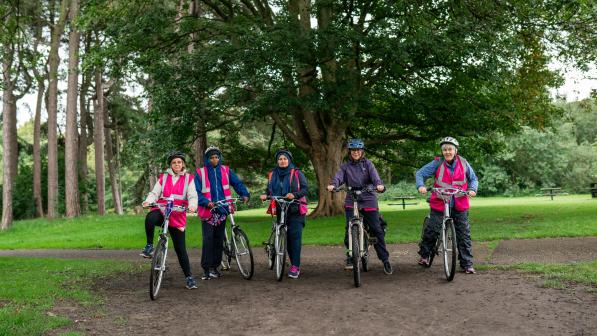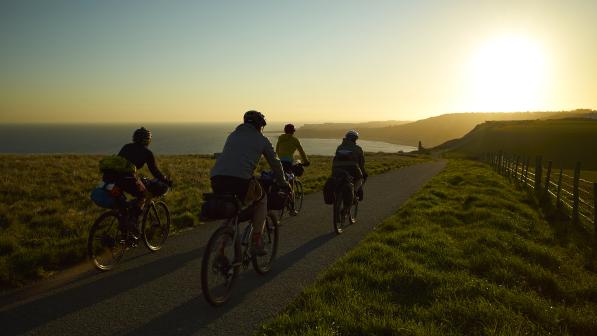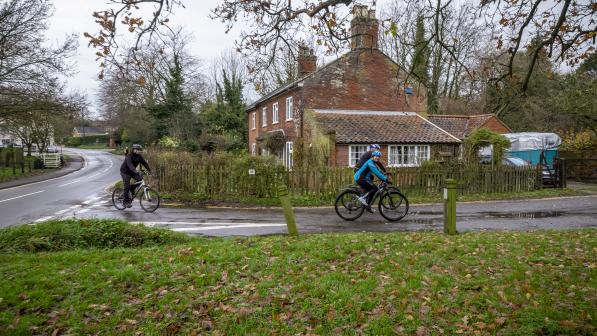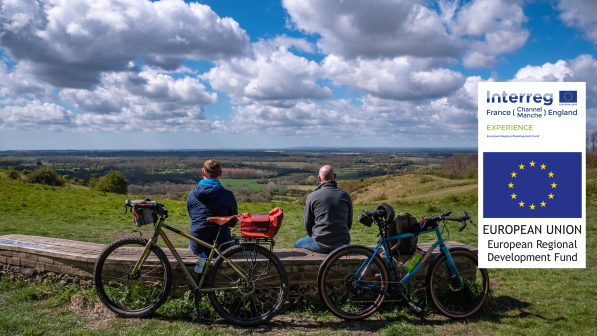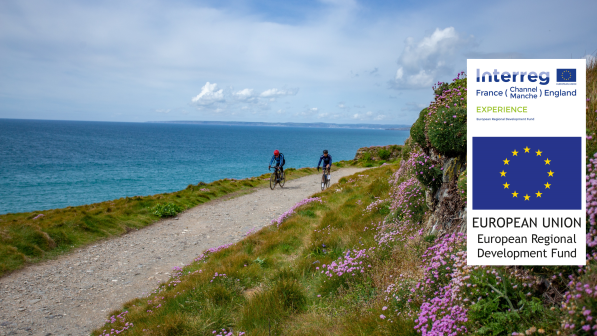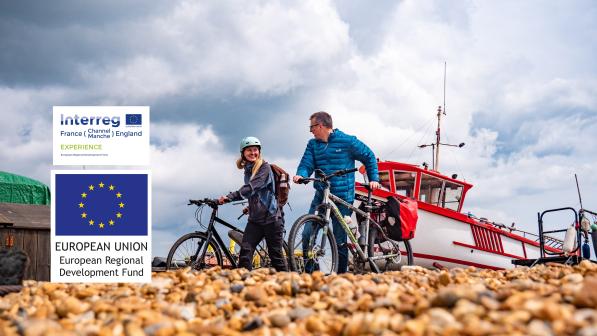A beginner’s guide to what to take on a day ride

A multi-day tour of one of Cycling UK’s EXPERIENCE routes might sound intimidating, but these long-distance routes in Kent, Cornwall and Norfolk are also ideal for a day ride.
While they’re all designed to make you feel like you’re riding miles from civilisation, Norfolk’s Rebellion Way, Kent’s Cantii Way and Cornwall’s West Kernow Way all pass through or close to several big towns and cities with train stations. This means you can easily plan an excursion to ride a section of any of the routes that fits with your needs.
You can decide how far you want to ride and even over what sort of terrain. You can choose between an ‘A-B’ route where you ride between two train stations – or B&Bs if you want to make a weekend of it! – or ‘there and back’ where you choose a base, head out and after reaching your chosen stop point (a particularly nice-looking café, for example) you turn back to your starting point.
But if you’re new to day rides, it might be difficult to work out what to take with you. This guide covers all the basics.
Clothing
Even in summer British weather is – ahem – changeable. You’ll want to be as prepared as possible should things turn wet or chilly. Have a selection of items you can easily put on or take off and store away easily.
A short-sleeved top and shorts combined with arm and leg warmers are more versatile than long sleeves and trousers or leggings. The arm and leg warmers can be put on or taken off as needed and easily roll up to stash away in a jersey pocket or small bag. A buff will help keep wind and sun off your neck; this Stolen Goat x Cycling UK one means profits are invested back into our charity work.
A waterproof gilet will help keep your core warm if it gets chilly. A lightweight waterproof jacket that’s small enough to fit in a pocket is a must in British weather!

First aid kit
Accidents can happen and you should be prepared – especially if you’re spending a day away from civilisation. If you’re cycling with kids then it’s essential that you can treat any scrapes or cuts they might experience.
A basic first aid kit comprising bandages, plasters, antiseptic wipes, sunscreen and some aspirin should cover most eventualities. Read our comprehensive guide to first aid kits for cyclists for more information.
Be sure you know how to use everything in your kit. Cycling UK’s Bike First Aid is a one-day course that covers typical incidents and injuries sustained by cyclists.
Fuel
It’s easy to underestimate how much food and water you need when cycling. Often people run out of steam on a long ride because of lack of fuel, rather than lack of fitness or training.
Be prepared by having a decent breakfast before setting off. Plan in lunch or coffee and cake stops. This will give you time to rest and refuel – especially important if children are along for the ride.
Pack some snacks to keep energy levels up while cycling. Energy bars or gels are a convenient choice, while bananas are nature’s energy bars. Homemade flapjacks provide a good carb boost.
Drink plenty of water. How much does depend on you, but aim for at least 500ml per hour of riding and much more than this on hot and sunny days. Fill two water bottles; you might want to consider dropping an electrolyte tablet or two into one. These will replace lost sodium, potassium and magnesium that you don’t get from water alone.
Most cafés will top up your water bottles if you buy something from them – it’s only fair, after all. Cycling UK’s Cycle Friendly Places highlights businesses close to the EXPERIENCE routes that are particularly welcoming to cyclists.
Tools and accessories
A puncture or broken chain while miles from the nearest bike shop will quickly put paid to your day’s cycling. But a few basic tools and knowledge can keep you riding.
A multitool will cover you for any minor tweaks or removing a tyre. Also essential are tyre levers, spare inner tubes and a mini-pump or a CO2 inflator and a couple of cannisters. A puncture repair kit is helpful, too, as are chain links.
Knowing a bit of simple maintenance will help keep you rolling. Cycling UK has a series of easy-to-follow videos to help you keep your bike in shape.
A decent but lightweight lock will free you up to pop into shops or for that all-important café stop. If there’s any chance that you’ll be cycling in the dark then you’ll need front and rear lights – it’s a legal requirement to have lights between sunset and sunrise.

Maps and money
Many long-distance routes are waymarked, but not all of them, and even if they are it’s easy to miss a mark and get lost.
You don’t need an expensive GPS – although these are great if you’ve got one (or special birthday coming up!). There are several free apps that you can use to plot and navigate a route using your smartphone; Strava, Komoot and MapMyRide are three of the most popular.
A phone is an essential piece of kit in case of any emergencies, so it makes sense for it to double up as a navigation guide, too. Just be sure your phone is fully charged and the battery will last.
Cycling UK’s EXPERIENCE routes all come with GPX files that can be uploaded to these apps or to a GPS device.
A good old-fashioned paper map is great backup if batteries run out or you lose your connection. They’re light and hardly take up any space.
Cycling UK members get a 20% discount on Ordnance Survey paper maps, as well as a free region map bundle from Komoot – among a host of other benefits.
Ensure you have both cash and a debit/credit card. ID is useful too; this is particularly the case if you have any medical conditions any emergency services should know about.
Carried away
Now you know what to pack, you’ll need to know how to carry it all. Most, if not all, of what you need should fit in your jersey pockets and a saddle, bar or tube bag. If you want to take more, or you’re not in cycle-specific gear, then some combination of these three bags should suffice.
You could put it all in a rucksack, but keep in mind that your back can get rather sweaty on hot days.
If you’re riding with more than one person, you won’t need to double up on everything, so share out the items so you don’t have to carry it all. You might have to take care of snacks and spares for youngsters, but older children often want to take responsibility for their own – it’s good practice for riding on their own, too.
You probably won’t need everything suggested here on every ride. A bit of experimentation will mean you’ll soon streamline your essentials, and you can add in different items for different rides. Use our handy checklist to work out what you need.
